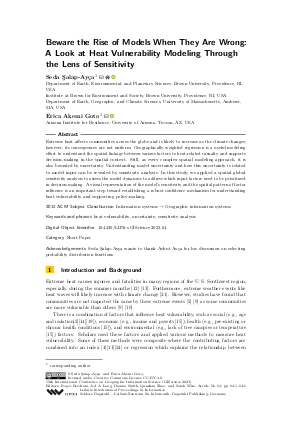LIPIcs.GIScience.2023.64.pdf
- Filesize: 0.95 MB
- 6 pages

 Creative Commons Attribution 4.0 International license
Creative Commons Attribution 4.0 International license

Extreme heat affects communities across the globe and is likely to increase as the climate changes; however, its consequences are not uniform. Geographically weighted regression is a useful modeling effort to understand the spatial linkage between various factors to heat-related casualty and supports decision-making in the spatial context. Still, as every complex spatial modeling approach, it is also bounded by uncertainty. Understanding model uncertainty and how this uncertainty is related to model input can be revealed by sensitivity analysis. In this study, we applied a spatial global sensitivity analysis to assess the model dynamics to address which input factors need to be prioritized in decision-making. A visual representation of the model’s sensitivity and the spatial pattern of factor influence is an important step toward establishing a robust confidence mechanism for understanding heat vulnerability and supporting policy-making.





















Feedback for Dagstuhl Publishing